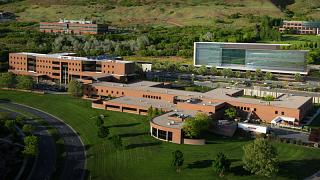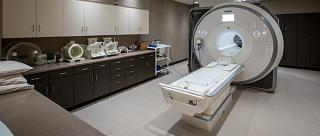In every area of medicine, research thrives on the interplay of ideas from many disciplines and on the advanced tools that support groundbreaking investigations. That’s no less true in mental health research.
In this case, the word translation means to move or transform. The aim of translation is to take research findings and move them quickly into practice to treat clinical problems and implement new therapies to support patients.
Utah lawmakers approved $90 million for the 185,000-square-foot Translational Research Building that will sit behind the current HMHI hospital in Research Park. HMHI will combine that funding with $65 million from the Utah philanthropic community to move Utah to the forefront of mental health research and care.
“You need resources to create a collaborative environment and house state-of-the-art equipment that supports translational work across disciplines. The Translational Research Building gives us an unmatched facility to do just that.”
Deborah Yurgelun-Todd, PhD, Vice Chair of Research
Collaborative Clout
For the first time, mental health researchers will share a building with experts from diverse fields, including artificial intelligence, public policy, business, and law. The chance for leaders in many areas to engage in water-cooler conversations will stir imaginations and spur collaboration on difficult issues.
For example, artificial intelligence can help researchers analyze large data sets to inform public policy and business and legal decisions. “We are hoping to increase reimbursement for mental health care,” says Yurgelun- Todd. “Right now, if you have a mental health disorder, you’re reimbursed at a much lower rate than if you have a medical problem. This is a public policy issue.” From a business standpoint, researchers may investigate how early intervention in mental health issues can lower costs and produce better outcomes.
The facility encourages work and sharing across medical disciplines. “As an example, investigators in Multiple Sclerosis (MS) have enabled research in psychiatry,” says Yurgelun-Todd. “The techniques developed to look at white matter changes in the brain in MS could also be applied to patients with depression.”
Exquisite Images
State-of-the-art equipment in the Translational Research Building will propel HMHI into a leadership position in neuroimaging. The facility will feature the only 7 Tesla magnetic resonance imaging (MRI) scanner in the Mountain West—and one of just 10 in the country. Superior field strength and high-performance electronics allow researchers to produce images with greater detail, exposing more-targeted opportunities for intervention and prevention.
“Not many 7 Tesla MRIs are located where mental health researchers can use them to answer clinical questions,” says Yurgelun-Todd. “Having the machine in the Translational Research Building will attract engineers and physicists who want to develop methodologies and techniques that use high resolution to better visualize the brain.”
Being able to see the previously unseeable will let researchers answer questions they didn’t know to ask before, like how minuscule brain regions affect disease.
Community Rapport
The work of the Translational Research Building will extend beyond its doors to open up new possibilities for community outreach and education. For example, physicians and scientists can share information on causes of mental health disorders with middle and high school students and their family members.
“This building will give the community a chance to participate in research and give us a better understanding of the dynamics among children and families,” Yurgelun- Todd says. “That’s just one example of how we’ll not only educate the community, but they’ll educate us as well.”

